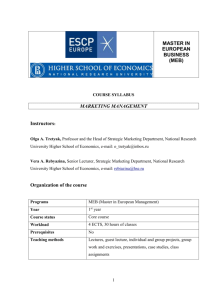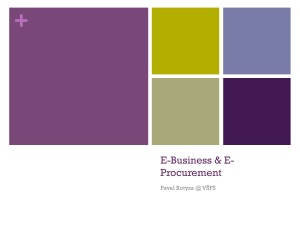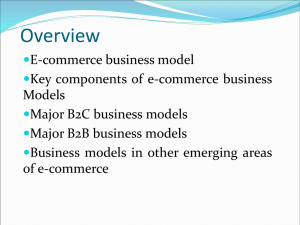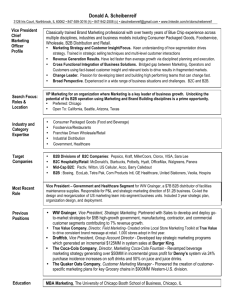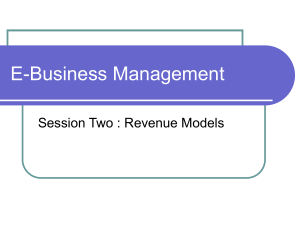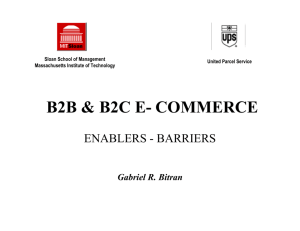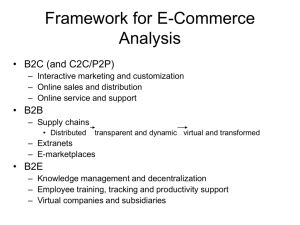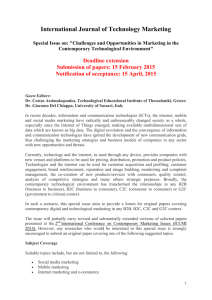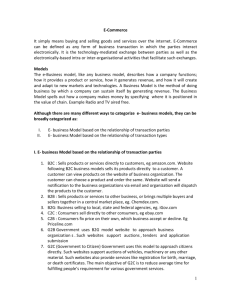The Customer and e-Commerce - Information Technology Services
advertisement
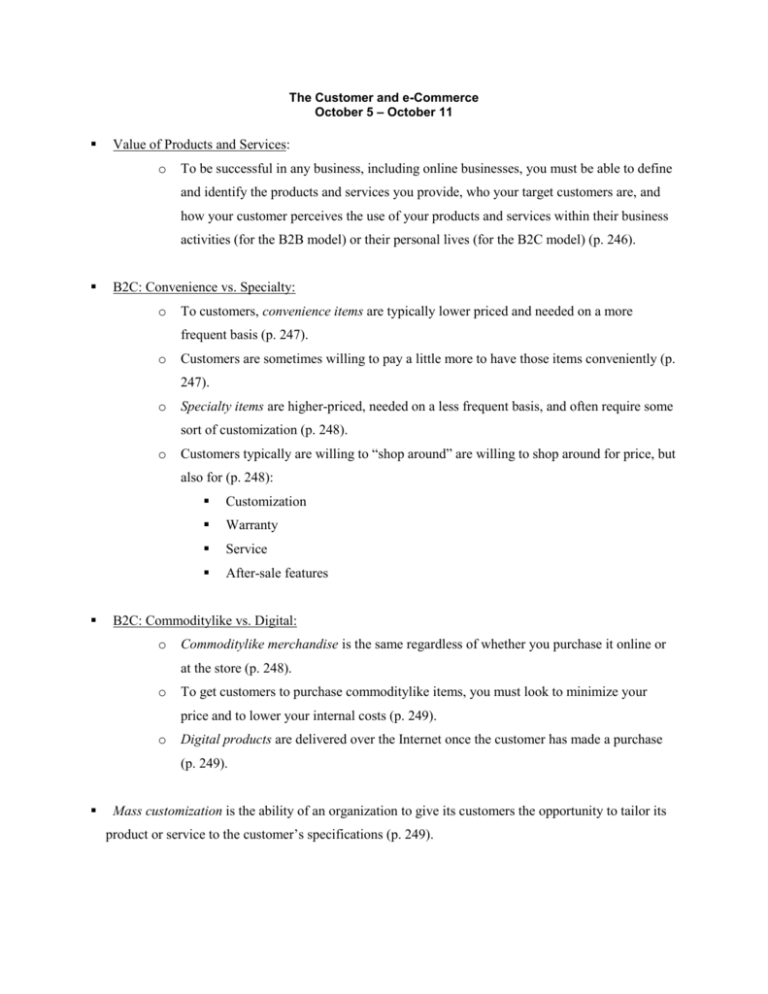
The Customer and e-Commerce October 5 – October 11 Value of Products and Services: o To be successful in any business, including online businesses, you must be able to define and identify the products and services you provide, who your target customers are, and how your customer perceives the use of your products and services within their business activities (for the B2B model) or their personal lives (for the B2C model) (p. 246). B2C: Convenience vs. Specialty: o To customers, convenience items are typically lower priced and needed on a more frequent basis (p. 247). o Customers are sometimes willing to pay a little more to have those items conveniently (p. 247). o Specialty items are higher-priced, needed on a less frequent basis, and often require some sort of customization (p. 248). o Customers typically are willing to “shop around” are willing to shop around for price, but also for (p. 248): Customization Warranty Service After-sale features B2C: Commoditylike vs. Digital: o Commoditylike merchandise is the same regardless of whether you purchase it online or at the store (p. 248). o To get customers to purchase commoditylike items, you must look to minimize your price and to lower your internal costs (p. 249). o Digital products are delivered over the Internet once the customer has made a purchase (p. 249). Mass customization is the ability of an organization to give its customers the opportunity to tailor its product or service to the customer’s specifications (p. 249). In a B2C environment, you’re potentially dealing with millions of different customers, each with unique tastes and needs (p. 249). B2B: MRO vs. Direct Materials: o Maintenance, repair, and operations (MRO) are materials that are necessary for running a modern corporation, but do not relate to the company’s primary business activities (p. 249). o In this regard, B2B consumers are different than B2C customers. Because of the volume of MRO items bought, B2B customers are much more likely to ask for discounts (p. 249). o Demand aggregation is the combining of purchases into a large order, which justifies a discount (p. 249). o Direct materials are materials that relate directly to a company’s primary business activities. These are materials that are used in production in a manufacturing company or are placed on the shelf for sale in a retail environment (p. 249). o Reverse auctions are the process in which a buyer posts its interest in buying a certain quantity of items with notations concerning quality, specification, and delivery timing. The sellers then compete by submitting lower and lower bids (p. 250). B2B: Horizontal versus Vertical: o An electronic marketplace is an interactive marketplace providing a central market place where multiple buyers and suppliers can engage in e-commerce and/or other e-commerce activities (p. 250). A horizontal marketplace is an electronic marketplace that connects buyers and sellers across many different industries, primarily for MRO items (p. 251). A vertical marketplace is an electronic marketplace that connects buyers and sellers within a single industry (p. 251). Finding Customers: o You will need to register with search engines so that Web surfers will be able to find information about your product or service (p. 252). o Banner ads are small advertisements that appear on other sites (p. 252). o A pop-up ad is a small Web page containing an advertisement that appears on your screen outside the current Web site loaded into your browser (p. 252). o Viral marketing encourages users of a product or service supplied by a B2C e-commerce business to encourage friends to join as well (p. 253). o An affiliate program is an arrangement made between two e-commerce sites that direct viewers from one site to the other (p. 253). o A click-through is a count of the number of people who visit one site, click on an ad, and are taken to the site of the advertiser (p. 253). o A conversion rate is the % of potential customers who visit your site who actually buy something (p. 253) Differences between B2C and B2B: o B2C: Registering with a search engine, online ads, viral marketing, affiliate programs, etc. o Focuses on conversion rates. B2B: E-marketplaces Formal establishment of business relationships Requires some level of IT system integration Negotiations Doesn’t include a marketing mix Moving Money Easily and Securely: o B2C Payment Solutions: A financial intermediary is an Internet-based company that makes it easy for one person to pay another person or organization over the Internet (p. 256). An electronic check is a mechanism for sending money from your checking or saving accounts to another person or organization (p. 256). An electronic bill presentment and payment (EBPP) is a system that sends bills (usually to end consumers) over the Internet and provides an easy-to-use mechanism (such as clicking on a button) to pay for them (p. 256). o B2B Payment Solutions: Electronic data interchange (EDI) is the direct computer-to-computer transfer of transaction information contained in standard business documents, such as P.O.s and invoices, in a standard format (p. 258). Security: o Encryption scrambles the contents of a file so that you can’t read it without having the right decryption key (p. 260). o Secure Sockets Layer: 1) Creates a secure connection between your computer and the Web site 2) Encrypts the information 3) Sends the information over the Internet o You will notice that you are connected through SSL because at the beginning of the Web address, you will see https:// (instead of just http://) and there is a lock on the bottom, right of the screen (p. 261).

